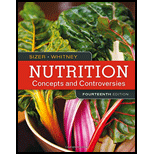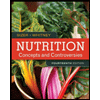
Concept explainers
Methylmercuryis a toxic industrial pollutant that is easily destroyed by cooking.
T
F
To determine:
Whether the statement “methyl-mercury, a toxic industrial pollutant that can easily be destroyed by cooking” is true or false.
Introduction:
Methyl-mercury is a bio-accumulative environmental toxic substance. It is produced by different mercury related industries. Methyl-mercury is a persistent form of mercury. Its sources are natural and anthropogenic. Therefore, these are produced by different types of industries. It is formed in an aquatic environment and accumulated in the aquatic food chains.
Answer to Problem 1RQ
Correct answer:
The given is false.
Explanation of Solution
The methyl-mercury is a complex compound of mercury. It is highly toxic to the environment. It bio-accumulates by entering into the food chain of the aquatic ecosystem. The seafood, such as fish and other species are the main source of methyl mercury for the human beings.
Methyl-mercury is mostly absorbed from the gastrointestinal tract and its higher concentration causes nerve damage in people. The methyl-mercury cannot be destroyed by cooking. However, its exposure can be reduced by adopting recommendations for selecting and cooking methods of fishes.
The methyl-mercury is a toxic pollutant produced by industries and cannot be destroyed by cooking. Therefore, the given statement is false.
Want to see more full solutions like this?
Chapter 5 Solutions
Nutrition: Concepts and Controversies
- The movement of mineral nutrients through organisms and their environment is called a __________cycle. biological bioaccumulation biogeochemical biochemicalarrow_forwardA consumer choosing a product that says "green" on the label can be assured that it is safe for the environment. T Farrow_forwardThe yeasts whose fermentation activity produces the carbon dioxide that makes bread rise are a _______. a. chytrid b. zygote fungus c. sac fungus d. club fungusarrow_forward
- The process whereby nitrogen is brought into organic molecules is called.___________ nitrification denitrification nitrogen fixation nitrogen cyclingarrow_forwardOrganisms that can make their own food using inorganic molecules are called: autotrophs heterotrophs photoautotrophs chemoautotrophsarrow_forwardIrradiation can a. destroy vitamins. b. sterilize spices. c. make food radioactive. d. promote sprouting.arrow_forward
- Carbon, hydrogen, and oxygen are _______ for plants. a. macronutrientsd b. micronutrientse c. trace elements d. required elements e. both a and b f. both a and darrow_forwardA consumer choosing a product that says “green" or ‘eco-friendly’ on the label can be assured that it is safe for the environment T Farrow_forwardNitrogen deficiency stunts plant growth and causes leaves to turn yellow and then die. Why does nitrogen deficiency cause these symptoms? Hint: Think about which biological molecules incorporate nitrogen atoms.arrow_forward
- A soil consists of layers called that taken together are called a ________. soil profiles : horizon horizons : soil profile horizons : humus humus : soil profilearrow_forwardThe mussels that live at the NW Eifuku volcano are examples of.__________ chemoautotrophs photoautotrophs apex predators primary consumersarrow_forward
 Nutrition: Concepts and Controversies - Standalo...Health & NutritionISBN:9781305627994Author:Frances Sizer, Ellie WhitneyPublisher:Brooks Cole
Nutrition: Concepts and Controversies - Standalo...Health & NutritionISBN:9781305627994Author:Frances Sizer, Ellie WhitneyPublisher:Brooks Cole- Basic Clinical Lab Competencies for Respiratory C...NursingISBN:9781285244662Author:WhitePublisher:Cengage





